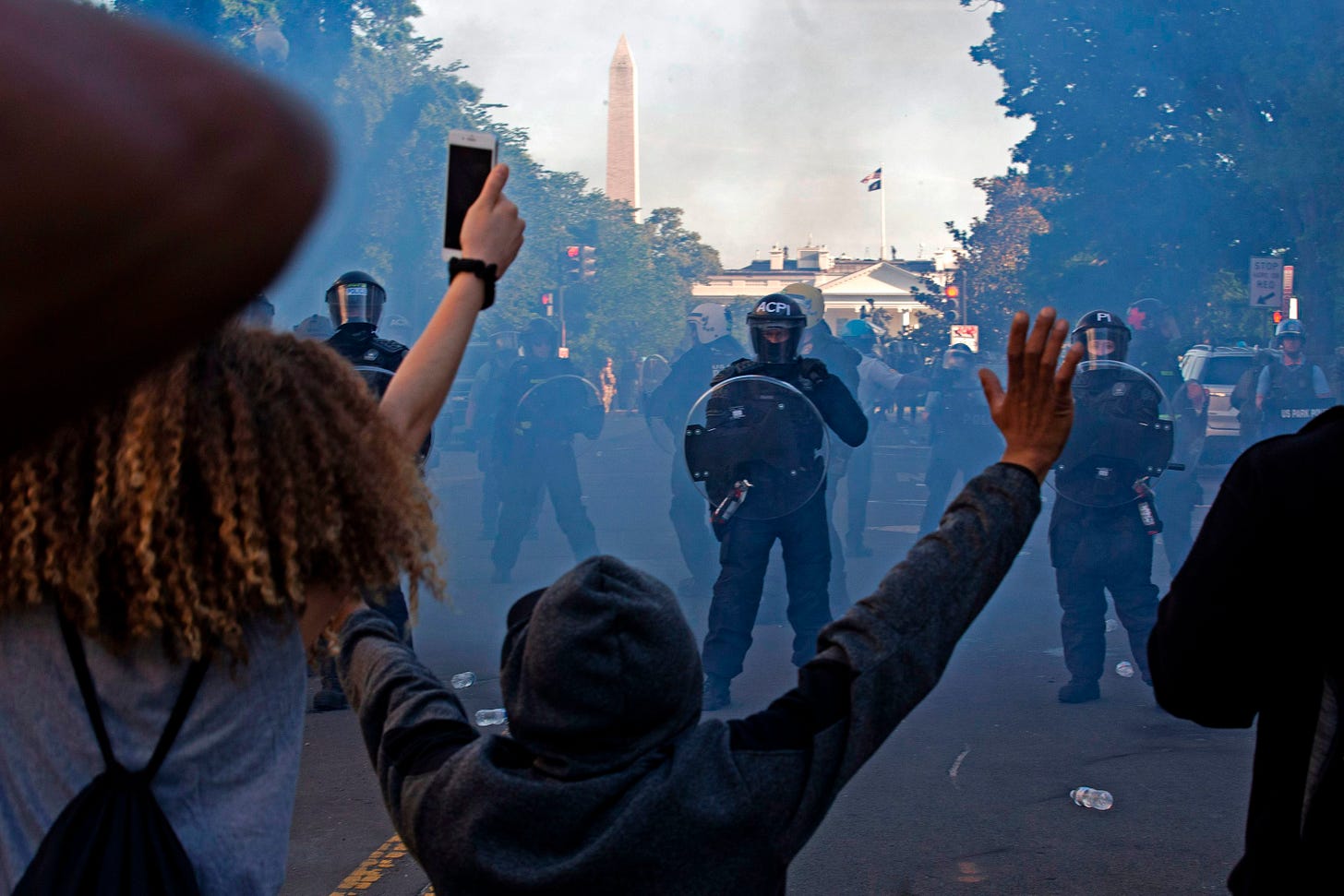Trump’s Insurrection Act Threat
The constitutionality and risks of using the U.S. military to quell civil unrest.

On Monday, President Trump announced that he is “mobilizing all available federal resources, civilian and military, to stop the rioting and looting . . . and to protect the rights of law-abiding Americans, including your Second Amendment rights.” This came in response to the widespread riots prompted by the brutal videotaped killing of George Floyd, an unarmed black man, by a white police officer and his bystander comrades in Minneapolis on May 25.
The authority cited for Trump’s pledge is a statute known as the Insurrection Act, which dates from 1807 and has been used and amended since—suggesting that it is not an arcane artifact of history but a serious tool of presidential power. The statute provides that “the President, by using the militia or the armed forces, or both, or by any other means, shall take such measures as he considers necessary to suppress, in a State, any insurrection, domestic violence, unlawful combination, or conspiracy” if one of two conditions exist: an insurrection or domestic violence makes it hard to enforce federal law, or an insurrection or domestic violence makes it hard to enforce state law in a way that hinders the rights of “any part or class of its people.” The president must first make a proclamation telling the “insurgents” to disperse and peaceably go home.
A few things to keep in mind here:
First, an important Supreme Court ruling that limits the power of the president to act in emergencies would not apply in these circumstances. In the famous case of Youngstown Sheet & Tube v. Sawyer, President Truman’s attempt to take over the steel mills during the Korean War was struck down by the Court. Unlike Truman, who argued that his executive order was justified by his inherent Article II power, Trump would be acting pursuant to a statute giving him powers to quash insurrections with armed forces. If the Insurrection Act itself is constitutional—which it likely is, having been used several times since 1807—Trump can use it.
Second, however, Trump and executive branch personnel acting on his orders cannot use the statute to infringe on other parts of the Constitution. So if troops rounded up only black people, that would violate the Equal Protection Clause of the Fifth Amendment—although that would not mean much if Congress didn’t sanction Trump for violations.
Third, there is another statute, the Posse Comitatus Act of 1878, that expressly limits the powers of the federal government to use the federal military to enforce civilian law, but it doesn’t do much work here. This prohibition applies “except in cases and under circumstances expressly authorized by . . . [an] Act of Congress,” which indicates that the Insurrection Act supersedes the Posse Comitatus Act. And Article IV of the Constitution provides that “the United States shall guarantee to every state in this union a republican form of government, and shall protect each of them against invasion [and] against domestic violence,” so it seems to envision that the federal government could assist the states in quelling domestic riots.
Fourth, it is nonetheless a bedrock American tradition that military involvement in civilian affairs is abhorrent in the main. The tradition antedates the United States; the principle can be traced back to the Magna Carta, which declared in 1215 that “no free man shall be . . . imprisoned . . . or in any other way destroyed . . . except by legal judgment of his peers or by the law of the land.” Military rule is out.
The question becomes how to strike the proper balance. A president’s use of the Insurrection Act to stem widespread chaos and possible carnage is acceptable. Using the military for an unnecessary, potentially bloody intrusion into the affairs of individual states and their civilian populations is not.
Two hundred fifty years ago, on March 5, 1770, a riot occurred in Boston when American colonists attacked British soldiers. What began as an altercation with a single soldier mushroomed into more than 2,000 British troops occupying a city of 16,000, and numerous civilian deaths. John Adams represented the British officer and his eight soldiers at trial, two of whom were found guilty of manslaughter.
One lesson of the Boston Massacre is that there’s a difference between the use of military force to protect against marauding invaders and the use of military force to police outraged citizens. It’s too soon to tell whether Trump’s threat is necessary and appropriate or whether it will only further stoke racial divisions—possibly with the ultimate effect of entrenching Trump’s power.
For now, the backdrop of his announcement is telling. Minutes before the mandatory 7 p.m. curfew fell on Washington, D.C., authorities began tear-gassing peaceful demonstrators to clear Lafayette Park in front of the White House. The heavy-handedness was used against innocent civilians for purposes of facilitating Trump’s pomp as he lumbered across the street to St. John’s Episcopal Church where he posed for pictures, awkwardly holding a Bible.
With the Insurrection Act, Congress appears to have given Trump the power he now brandishes as a stick over America. The only reliable way to temper that power is at the ballot box.


